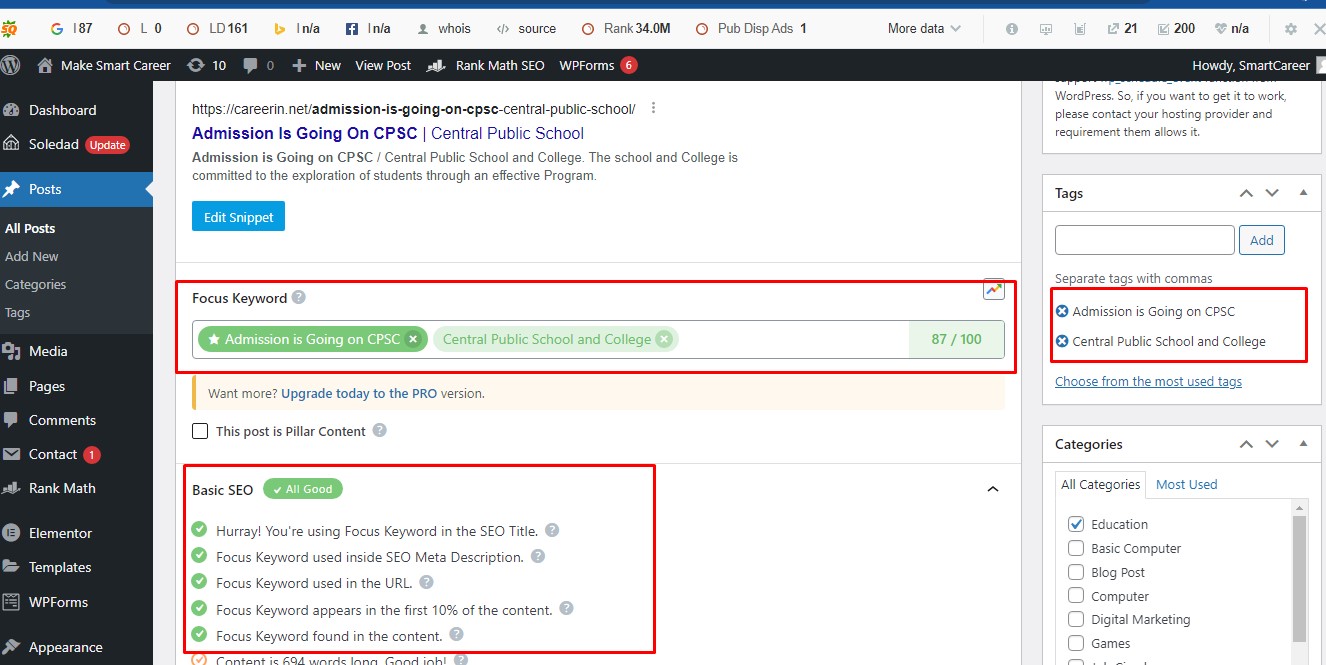Introduction to Keywords
A keyword is a term used in digital marketing to describe a word or a group of words an internet user uses to perform a search in a search engine or search bar. Keywords are fundamental to any SEO strategy, and they should be central to all web content, titles, and SEO elements.
Types of SEO
- On-Page SEO
- Off-Page SEO
- Technical SEO
Long-Tail Keywords
Long-tail keywords consist of more than three words and offer unique advantages:
- Low Competition: Easier to rank for due to less competition.
- Low Search Traffic: Generally less frequent searches but highly targeted.
- Profitable: High conversion rates due to specific user intent.
- Easy Ranking Opportunity: Ideal for niche markets and new websites.
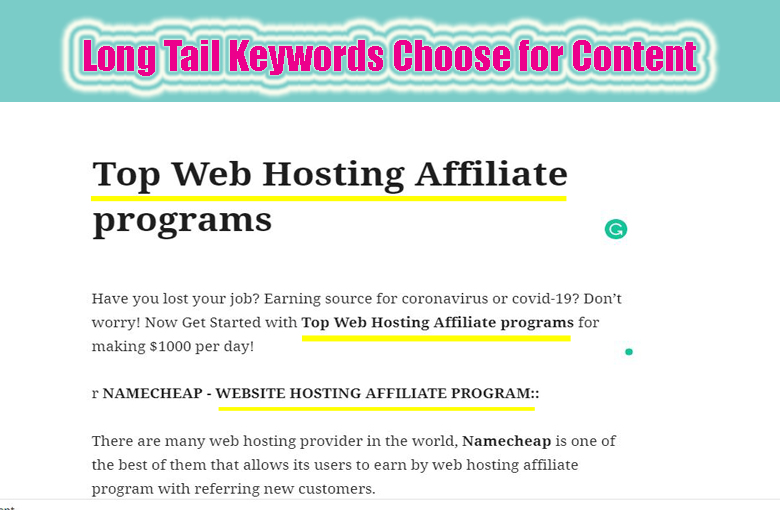
Short-Tail Keywords
Short-tail keywords consist of less than three words and have distinct characteristics:
- High Search Volume: Attracts more traffic but is highly competitive.
- Hard to Rank: Challenging to secure top positions in search results.
- Not Friendly for New Websites: Best suited for established sites.
- Not Specific: Broader search intent, leading to varied results.
Keyword Search Volume & Difficulty
Keyword Search Volume refers to the estimated number of monthly searches by users. Keyword Difficulty is measured on a scale from 0 to 100:
- 0-30: Low competition
- 30-60: Medium competition
- 60-100: High competition
A more detailed breakdown:
- Difficulty 50+: High Difficulty
- 30-49: Medium Difficulty
- 25-29: Semi-Medium Difficulty
- 10-20: Low Difficulty
- 0-10: Very Low Difficulty
Keyword Research & Selection
Keyword research is crucial for identifying niche-relevant, low-competition, and high-demand keywords for clients. The process involves using tools like Google Trends, Ahrefs, and SEMrush to gather data. A recommended number of keywords to supply to a client is 20-25, focusing on search volume, competition, and keyword difficulty.
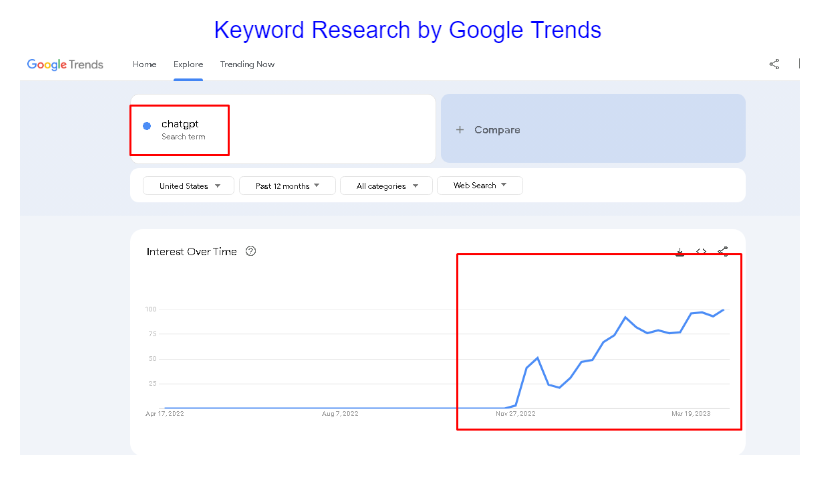
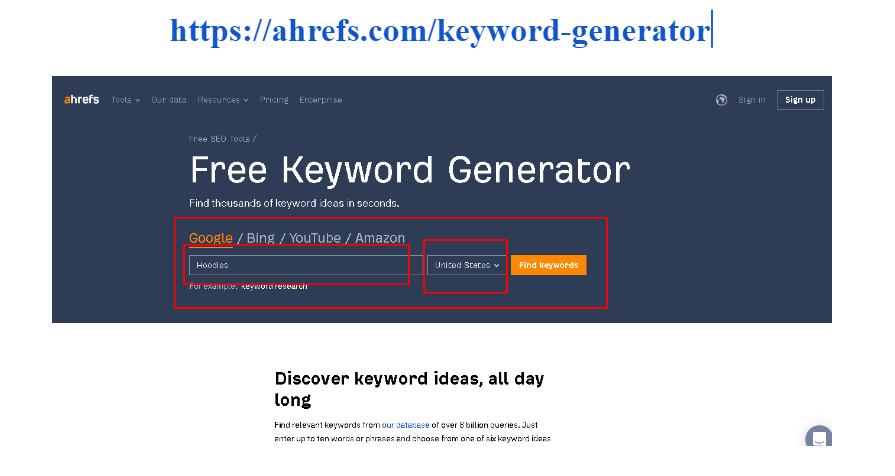
KGR Keyword – Keyword Golden Ratio
The Keyword Golden Ratio (KGR) is calculated using the formula:
KGR = allintitle / search volume * 100
This helps identify easy-to-rank keywords.
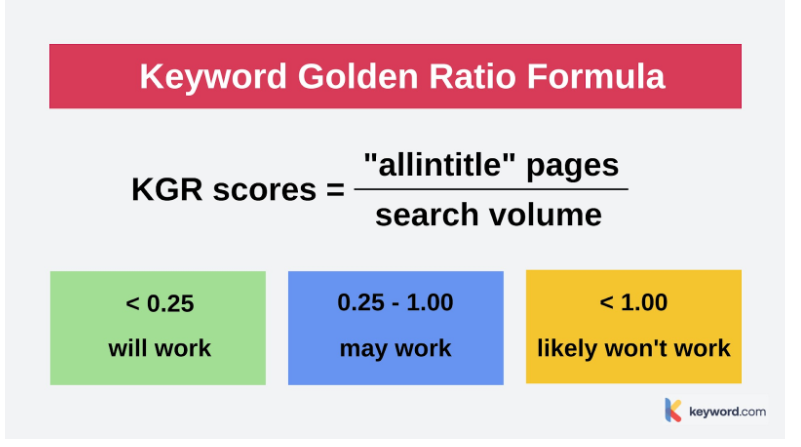
Practical On-Page SEO
URL Optimization
- Use targeted keywords in the URL.
- Example:
abc.com/wedding-photographer
Title Tag Optimization
- Include the targeted keyword in the title tag.
- Keep the title length between 60-70 characters.
- Use modifier words like “Best,” “Strongest,” “Top 10,” etc., to enhance relevance.
Content Research & Optimization
- “Content is King.” Analyze competitors’ content length (700, 800, 600 words) and aim to post 1000 words for better performance.
- Use heading tags effectively:
- H1: Focus Keyword
- H2-H6: LSI (Latent Semantic Indexing) Keywords
Keyword Usage
- Place focus keywords within the first 100 words.
- Use the focus keyword 5 times in a 1000-word article.
- Use tools like Google Docs and SEO Review Tools to check keyword density and avoid keyword stuffing.
Image SEO
- Use focus keywords in image alt tags. We can optimize images by adding titles, comments, tags, and other information on image properties or details.
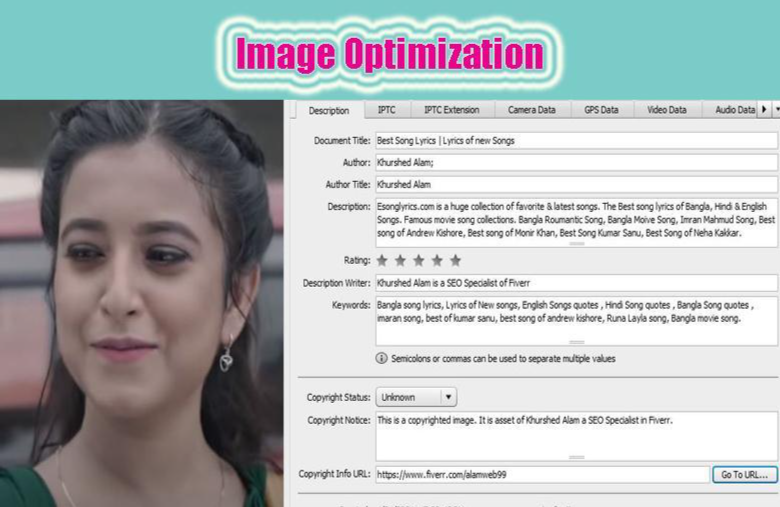
Content Updates
- Update content every six months to maintain relevance and rankings.
Avoiding Keyword Cannibalization
- Ensure each piece of content targets unique focus keywords to prevent internal competition.
On-Page SEO Tools
Utilize Rank Math or Yoast SEO for fixing on-page SEO issues, including URL optimization, title settings, meta descriptions, heading tags, content, tags, image alt tags, and canonical tags.
Shopify & Wix SEO Fixes
- Fix issues related to URLs, titles, meta descriptions, tags, and heading tags using the Shopify and Wix SEO interfaces.
- For Wix, log in to the client’s account, navigate to the published posts, and edit SEO settings as required.
Technical SEO
- HTTPS/SSL Certificate Management
- Robots.txt Configuration
- Sitemap Creation
- Schema.org Setup
- Canonical Tag Implementation
SEO Audit & Reporting
Conduct SEO audits using tools like Rank Math, SEObility, and WooRank. The audit report should cover URL optimization, title settings, meta descriptions, heading tags, content, tags, image alt tags, canonical tags, internal and external links, and keyword density.
Audit Reporting Format
| Issues | Status |
|---|---|
| URL Optimization | Fixed |
| Title Set | Fixed |
| Meta Description | Not Fixed |
| Heading Tag | Not Fixed |
| Content | Fixed |
| Tag | Fixed |
| Image Alt Tag | Not Fixed |
| Canonical Tags | Fixed |
| Internal and External Link | Fixed |
Social Media Sharing & Promotion
Promote content across various social media platforms including Pinterest, Twitter, Instagram, LinkedIn, and Facebook.
Advanced Backlink Strategies
- Profile Backlinks/Citations
- Guest Posting
- Directory Submission
- Web 2.0 Backlinks
- Competitor Backlink Analysis
Tools like SEOToolBD can assist in backlink creation and competitor analysis.
Final On-Page SEO Score
Regularly evaluate your on-page SEO score using tools like Ubersuggest, Ahrefs, or SEMrush, and make necessary adjustments to maintain or improve rankings.
